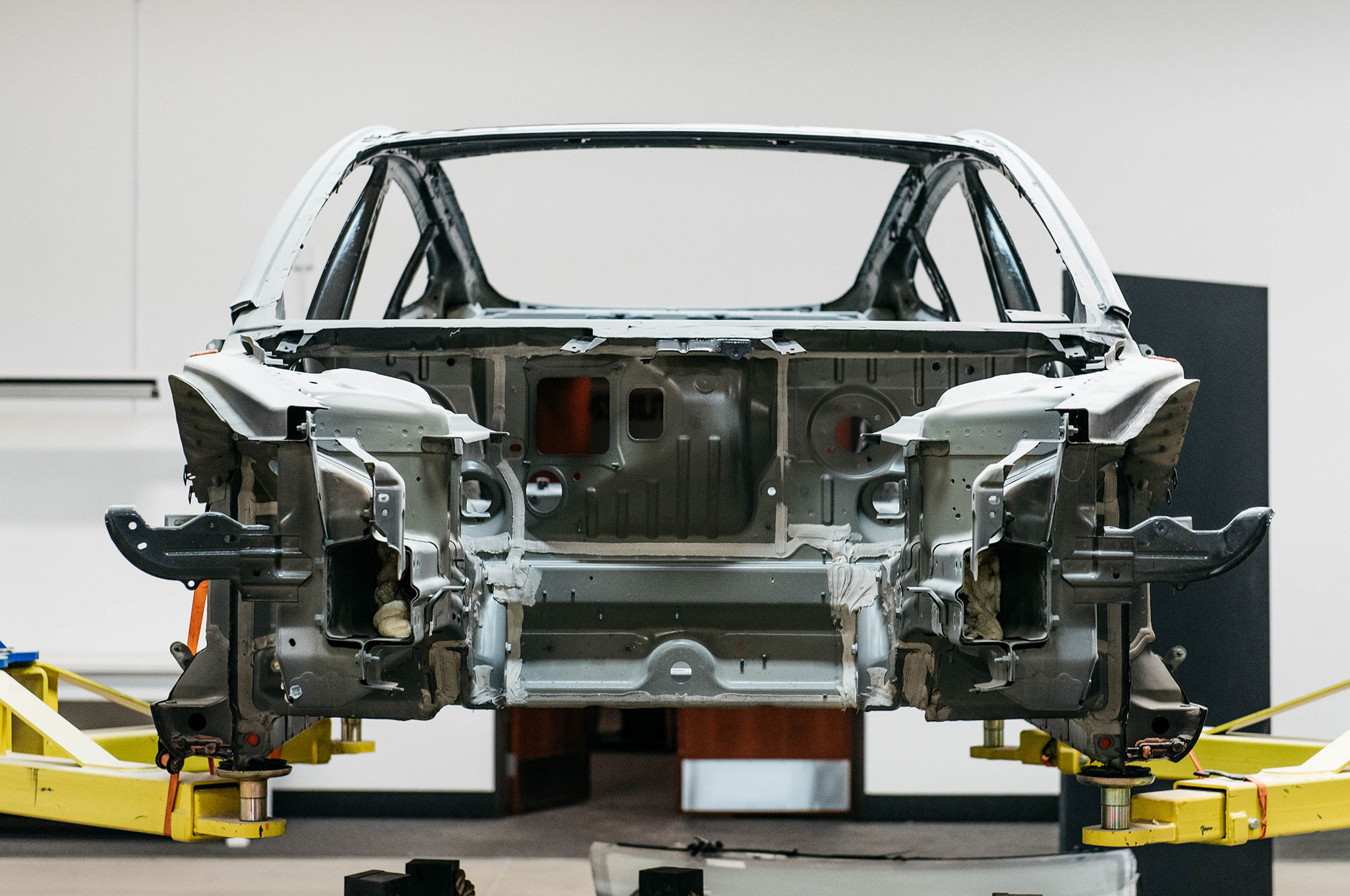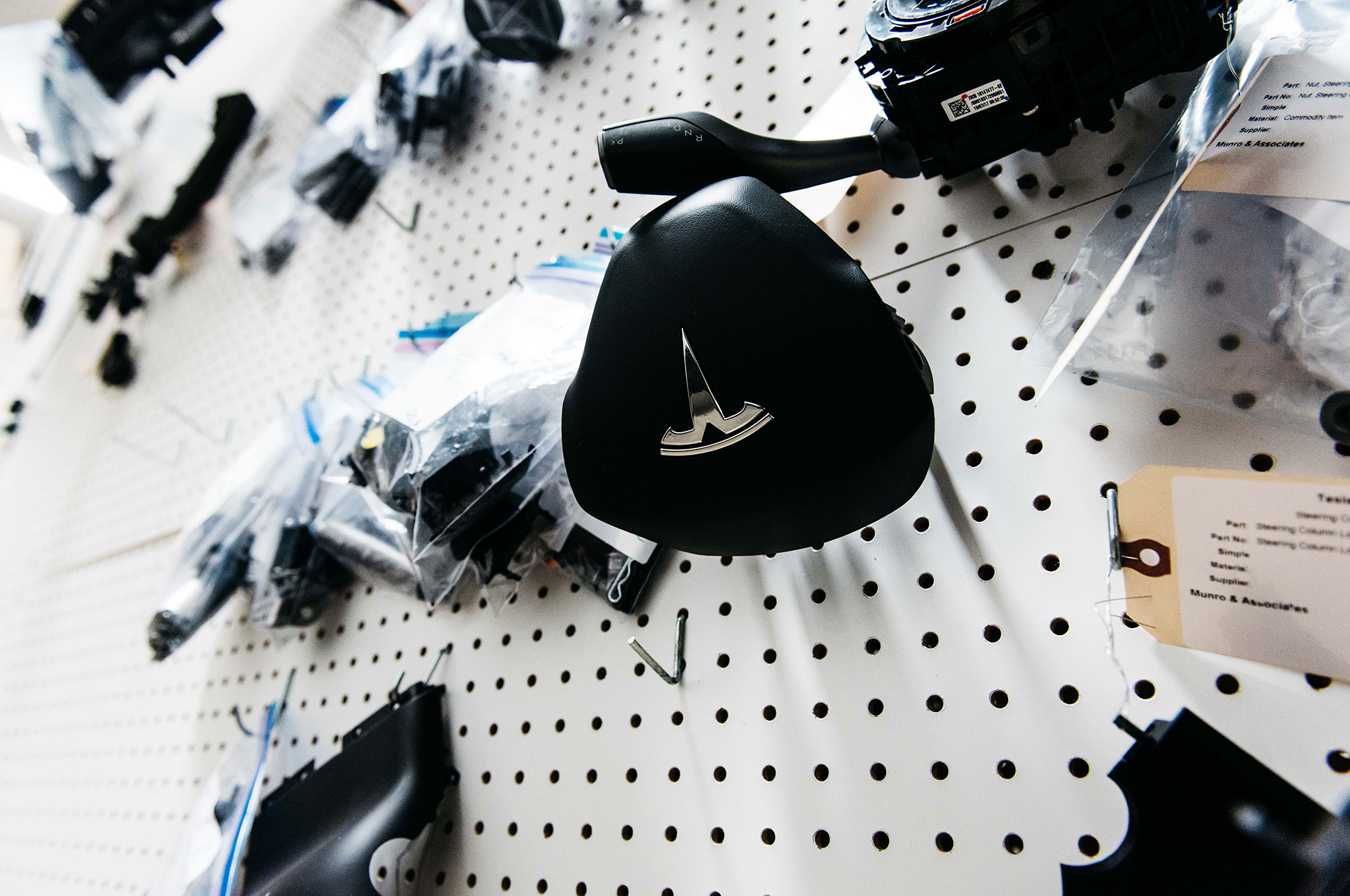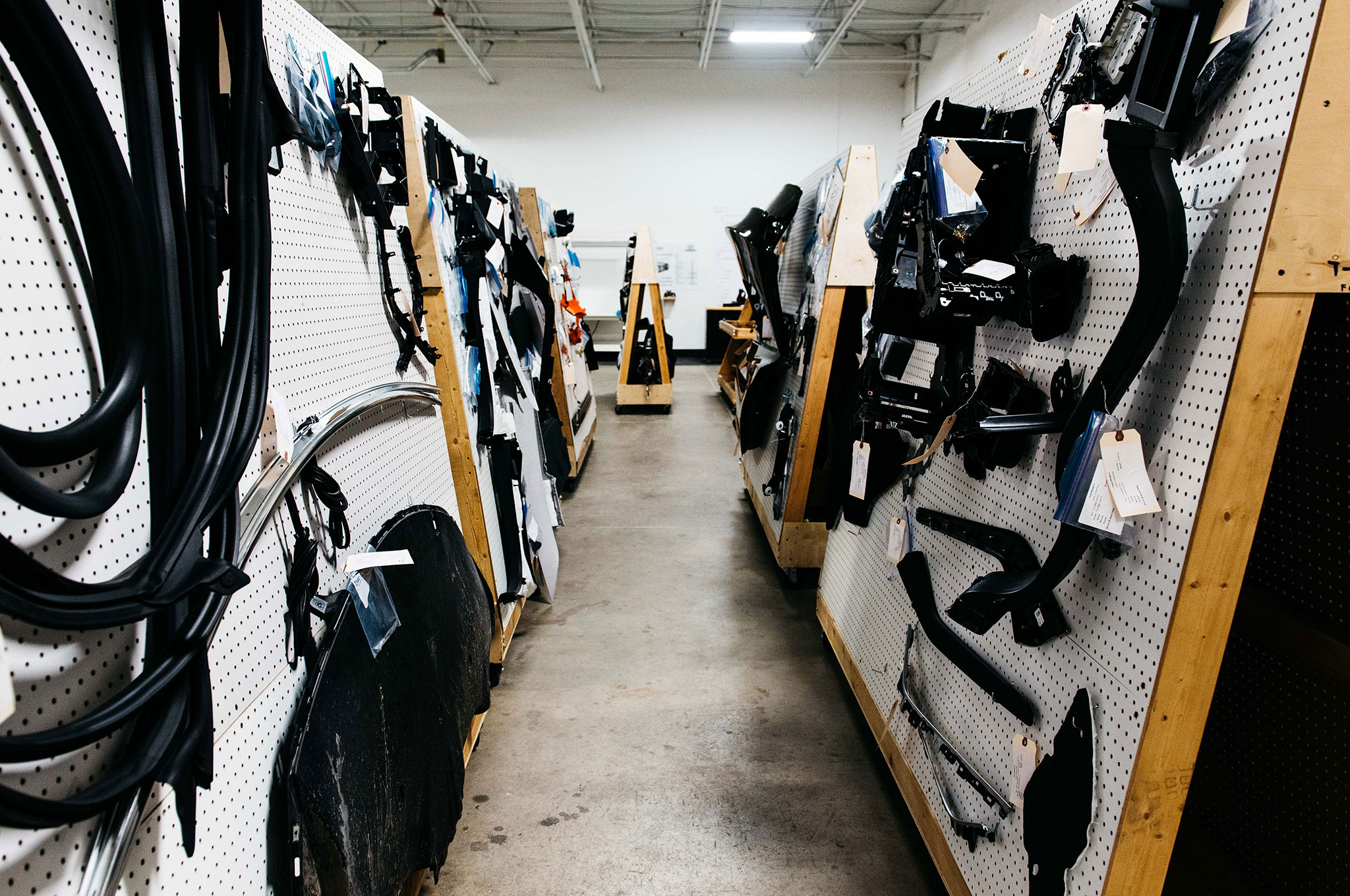To Sandy Munro, everything beneath the floorboards of the Tesla Model 3 shows off engineering and design that mainstream automakers could, and should, emulate.
“This is brilliant engineering,” he says.
The rest of the car? Not so much. He points to the aluminum bucket for the rear trunk, attached with self-piercing rivets into the steel body. Throughout this part of the car, a rivet applied inside the bucket, downward, is millimeters from another rivet applied the opposite way, from the bottom-up. Elsewhere, there’s a concentric-ring weld inside a standard weld, requiring two different robots to apply them, and inside the rear door daylight opening is “the biggest weld flange” Munro has ever seen.
“This car is the heaviest C-sized [compact segment, like a Mercedes-Benz C-Class] body-in-white we’ve ever seen Munro says. He is chief executive officer of Munro & Associates, which is in the midst of a teardown of a Tesla Model 3 that the firm purchased from an early buyer in late January, for $72,000.
Munro spoke to a group of Metro Detroit-based journalists at the Automotive Press Association Wednesday, then led us through seven benchmark stations to show what the firm has discovered, so far, from the Model 3’s teardown.

“The primary car evaluated by Munro was built in 2017,” a Tesla spokeswoman says [there’s a second, black Tesla Model 3 that remains in-tact and drivable for dynamics evaluation, and Sandy Munro has praised its handling]. Tesla says the Model 3’s production processes have improved, and “our data already shows (sic) that Model 3 quality is rapidly getting better.”
Munro & Associates is product benchmarking firm based in Auburn Hills, Michigan, and described on its website as “home of lean design and design profit,” with branches around the globe. The company provides benchmarking services on products ranging “from Barbie [dolls] to the Space Station,” and can perform a $1-million tear down and benchmark of your new car, or a competitor’s, for $87,000. Its most thorough teardown analysis to date was for the BMW i3, with a 54,000-page report that deconstructed the electric commuter car into about 54,000 parts and took about a year, an over-thoroughness that Munro says he will never duplicate again. The BMW i3 had Munro & Associates’ best Fit, Finish & Quality (FFQ) score ever for a production car, while the Tesla Model 3, for which Munro expects the firm will put out about 12,000 pages, is on the opposite end of the spectrum.
“FFQ gives you the numbers,” he says. “We measured it and came up with a report, and that’s what it is. It’s sometimes like your bank account,” when you don’t like those numbers, he says.

counters that it has been “very focused on refining and tuning both part and body manufacturing processes,” according to the spokeswoman. Standard deviation of gaps and offsets are 40 percent better, and on par with Audi, BMW, and Mercedes models, “but in the spirit of relentless improvement, we are working to make them even tighter.”
The EV automaker says the body weight and complexity that Sandy Munro has criticized is to meet “unique safety requirements to prevent intrusion into the battery, and Model 3 was also designed to meet the latest small overlap front crash requirements that other reference vehicles may not have. … The safety of our customers is more important than any metric.” Indeed, Munro singles out the Model 3’s stiff B-pillars, but wonders why it needs three separate grades of steel for its construction.
The APA breakfast at Munro & Associates was nearly cancelled on Tuesday after an unnamed client complained about coverage on “Autoline After Hours” last week. The related show, “Autoline Daily,” ran clips of “After Hours,” earlier this week, including pieces in which Munro is critical of the Model 3’s build quality.
“Autoline has a lot of [viewer] hits,” Munro says, “making [Tesla] stock go up and down.”
Tesla is not a Munro client on the Model 3 teardown, nor of any other car. There are, to be clear, lots of factors affecting the value of Tesla’s common shares, including CEO and questions about its ability to ramp up Model 3 production to 5,000 cars per week by the end of 2018.

And while Munro told McElroy’s Autoline After Hours that you can see the Tesla Model 3’s bodygaps “from space,” he and his team are impressed with much of the car’s engineering and design, and want Tesla to succeed. A few highlights:
• “They have developed a chemistry that’s superior to other lithium-ion [EV] cars right now,” says Mark Ellis of the 4,416 cells in a four-module pack with one controller per module, all held together by a strong industrial glue, leaving no chance for reverse polarity. The Model 3’s cell has 20-percent more capacity than Tesla’s older cell, but it makes 50-percent more electricity “due to the new electro-chemistry.”
• Inside, the cross-car beam has over-molded plastic bits and is designed to be installed by robots, says Stephen Handley. The tacky-bottom floor mats require no fasteners, and the portable recharger bag has Velcro on the outer cover that’s sticky enough to lift the floor panel with it, with one hand.
• Much has been said about the 3’s minimalist, ventless dashboard, and Munro & Associates’ Sue Okray makes note of a bleed vent that directs the air vertically to meet the horizontal airflow of the wave vent. The HVAC’s central pumping station combines the pump, reservoir, and chiller in one piece, and the highly efficient heater takes advantage of the car’s high voltage.
• The on-board electronics and charging board are as elegant and well-designed as the body-in-white is puzzlingly complex and poorly built. David Warner says the charging board can handle single-phase AC or DC, and the heavier transformer parts are modular. The board’s flexible conductor is made of multiple layers of flat sheets of copper, and the circuit board has “Easter egg” imprints of the American flag and of Batman and Robin.
• Tesla has stamped its name on a plate inside the brake rotors, where few will see it, notes Al Steier, Munro’s benchmarking director. The electronic power steering has two power and two ground connections, and there’s no explanation for the redundancy. The modified double-wishbone front suspension has zip-ties around the top of the wishbones, probably to handle an NVH problem intensified by the lack of an internal combustion engine. Overall, “They’ve done a really good job trying to reduce weight on certain components,” Steier says.
So how much does all of this cost? Munro and his associates don’t care to speculate until the benchmark report is complete.
“I really hate speculation,” Munro says. “And when I get the numbers, I will tell you what I see.”